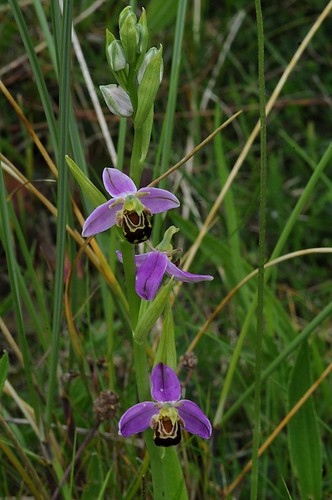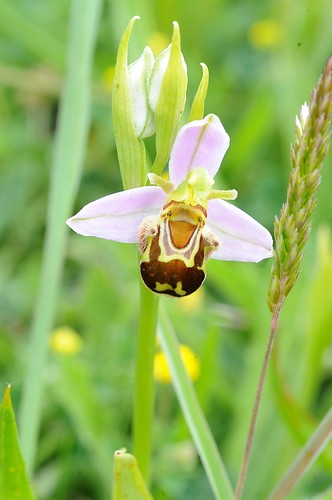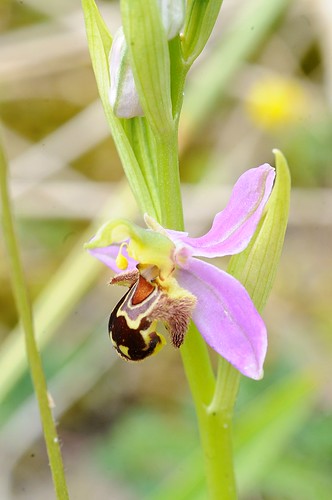Of the orchids remaining to be seen on the island; there was one I was particularly keen to see. The bee orchid, Ophrys apifera, has a more "orchidy" looking flower spike with big impressive looking individual flowers as opposed to hundreds of small flowers making up a spike. It also has historical interest being a plant Charles Darwin was particularly interested in and scientific interest due to its unique pollination strategy.
I hit up a local botanist for some gen on the location and within a few minutes of parking onsite found the unique geological structure he described in giving me the exact spot. I stood looking around for a few seconds and immediately spotted then lost a bee orchid. Looking for a few seconds I refound it and made my way carefully down to the plant. Bee orchids are a bit like many other diminuitive plants and fungi. Once you get your eye in in the right areas you find loads but finding the first is the hardest part. Anyway, what a plant!
The common name of this group of orchids comes from the fact that the flowers look (a little) like a bee. Close enough to fool male bees anyway. There are pheremones involved too I believe. The male bees try to get it on with the flower and take away the pollen sacs to pollinate the next orchid they try to have their wicked way with. Apparently this species can also get self pollinated in some parts of its range whereas in others a solitary bee does the job.
I must have found perhaps 20 flower spikes in total. Maybe slightly less. They were at varying stages of development and I may go back this weekend to try and capture more massive flower spikes (I was early in their season). I really like the photo below which clearly shows the pollen sac and the pistil it gets deposited on and how easily a bee taking off from the lip would move one to another.
Brilliantly another orchid I was looking for was less than 20 feet from this colony about which more later.



No comments:
Post a Comment